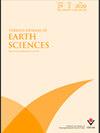使用ASTER图像对锡瓦斯盆地(土耳其)南部蛇绿岩进行岩性测绘
IF 1.1
4区 地球科学
Q3 GEOSCIENCES, MULTIDISCIPLINARY
引用次数: 0
摘要
:安纳托利亚中东部东西向伸展的Sivas盆地是晚白垩世特提斯蛇绿岩冲断后形成的前陆盆地,也是一个向北边缘的褶皱和冲断带。该盆地的基岩主要代表沉积岩(中生代平台型碳酸盐岩)和晚白垩世Divriği蛇绿岩杂岩。由于蛇绿岩受到强烈构造过程的影响,基于野外的测绘研究需要漫长的过程和成本。本研究利用遥感方法和技术揭示了锡瓦斯省乌拉什区周围出露的蛇绿混杂岩的岩性特征。由于该地区干旱的气候条件和稀少的植被覆盖,几乎所有的盆地岩石露头都可以通过光谱增强方法轻易地分离出来。本研究使用了先进星载热发射和反射辐射仪(ASTER)数据的带比(BR)、光谱指数(SI)、去相关拉伸(DS)、主成分分析(PCA)和支持向量机(SVM)。BR、PCA、DC和SI技术清楚地将Divriği蛇绿岩杂岩与基底和盖层沉积岩区分开来。SVM将含铬质纯岩与其他蛇绿岩相关岩石单元区分开来。根据图像分析性能,已经观察到,与该地区1/100000比例的地质图相比,可以更详细地区分Divriği蛇绿岩杂岩的岩石。本文章由计算机程序翻译,如有差异,请以英文原文为准。
Lithological mapping of ophiolitic rocks from southern part of the Sivas Basin (Turkey) using ASTER imagery
: The east-west extended Sivas Basin in central-eastern Anatolia is a foreland basin that formed after the obduction of the Tethyan ophiolite during the late Cretaceous and is also a north-verging fold-and-thrust belt. The basement rocks of the basin represent mainly sedimentary (Mesozoic platform-type carbonates) and late Cretaceous Divriği ophiolitic complex. As the ophiolitic rocks are affected by intense tectonic processes, field-based mapping studies require long processes and costs. The study tests to reveal the lithological features of the ophiolitic complex outcropping around the Ulaş district of the Sivas Province using remote sensing methods and techniques. Due to arid climatic conditions and rare vegetation cover in the region, almost all outcrops of the basin rocks can be separated by spectral enhancement methods easily. Band ratio (BR), spectral indices (SI), decorrelation stretch (DS), principal component analysis (PCA), and support vector machine (SVM) on Advanced Spaceborne Thermal Emission and Reflection Radiometer (ASTER) data were used in this research. BR, PCA, DC, and SI techniques clearly distinguish the Divriği Ophiolitic Complex from the basement and cover sedimentary rocks. SVM distinguishes the chromite-bearing dunites from the other ophiolite-related rock units. According to image analysis performances, it has been observed that the rocks of the Divriği ophiolitic complex can be differentiated in more detail compared to a 1/100.000 scaled geological map of the region.
求助全文
通过发布文献求助,成功后即可免费获取论文全文。
去求助
来源期刊

Turkish Journal of Earth Sciences
地学-地球科学综合
CiteScore
2.40
自引率
10.00%
发文量
6
审稿时长
6 months
期刊介绍:
The Turkish Journal of Earth Sciences is published electronically 6 times a year by the Scientific and Technological Research
Council of Turkey (TÜBİTAK). It is an international English-language journal for the publication of significant original recent
research in a wide spectrum of topics in the earth sciences, such as geology, structural geology, tectonics, sedimentology,
geochemistry, geochronology, paleontology, igneous and metamorphic petrology, mineralogy, biostratigraphy, geophysics,
geomorphology, paleoecology and oceanography, and mineral deposits. Contribution is open to researchers of all nationalities.
 求助内容:
求助内容: 应助结果提醒方式:
应助结果提醒方式:


